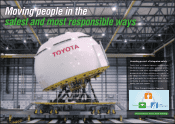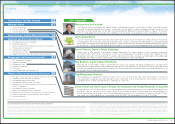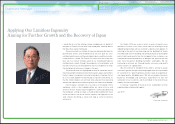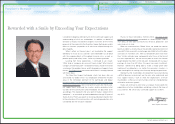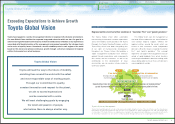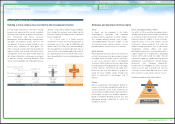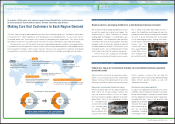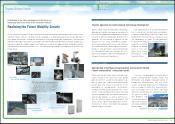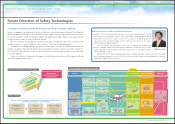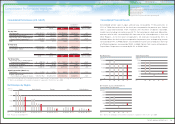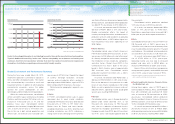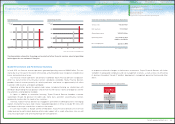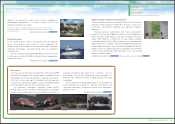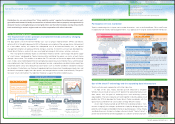Toyota 2011 Annual Report Download - page 15
Download and view the complete annual report
Please find page 15 of the 2011 Toyota annual report below. You can navigate through the pages in the report by either clicking on the pages listed below, or by using the keyword search tool below to find specific information within the annual report.
Special FeatureMessage/Vision
Business and
Performance Review
Management and
Corporate Information
Financial Section and
Investor Information
Pursuit of Real Safety: Accident Reconstruction Technology
Developing effective safety technology through
accident reconstruction and analysis
Toyota’s safety technology development pursues real safety. Our first step is to analyze a broad spectrum
of accident investigation data to determine why an accident occurred and what kinds of injuries were
incurred. Next, the accident is reconstructed through a simulation and applicable technologies are
developed. In the final stage we conduct vehicle tests to confirm that the targeted performance has been
achieved.
We continue to investigate and analyze accidents after the vehicle have reached the market. By
repeating these steps, we pursue to develop safety technologies. This indicates the substantial importance
of fundamental technologies for accident reconstruction in the development of safety technologies.
Accident Investigation &
Analysis
Development &
Evaluation Simulations
Pursuit of Real Safety
Accident Reconstruction
Technology
The world’s largest indoor test facilities
Driving Simulator
In 2008, Toyota developed one of the world’s largest driving simulator,
equipped with a high-resolution imaging system and providing a full
360-degree driving perspective. This allows research on the driver behavior
that precedes crashes, which is difficult to be conducted in a real environment.
By repeating the same conditions multiple times, it is possible to examine
the benefits of safety assist equipment.
For example, when measuring the effects of the PCS (Pre-Crash Safety
System), it is possible to sample and analyze the behavior of a variety of
drivers by assessing different drivers under repeated, identical conditions.
Also, the simulator makes it possible to reconstruct driving condition in a state
of reduced consciousness and thereby we are developing technologies for a
safety guidance system to early detect states of mind unsuitable for driving.
Toyota will continue to utilize our driving simulators for tasks such as the
analysis of human behavior and measuring the effectiveness of safety systems.
Driving simulator
Sense of realism through high-
resolution, full-surround CG
Additional details available at Click HERE
Additional details available at Click HERE
Special Feature: Toyota’s Safety Technology
Although crash test dummies used to test the effects of crashes on the hu-
man body allow for comparisons of load magnitude on the body, they do not
provide the means for analyzing injury mechanisms. This is particularly true
in the case of pedestrian accidents, in which body positions change moment
by moment, making it difficult to examine what happened where. To meet
that challenge, in 2000 Toyota and Toyota Central R&D Labs developed hu-
man models known as THUMS (Total Human Model for Safety), starting off
with a skeletal model on which the human body is precisely reproduced. The
current THUMS Version 4 is made up of 2 million elements. The digital repre-
sentation of parts of the body such as the brain, internal organs and muscles
enables a detailed analysis of the crash impact on organs.
THUMS: THUMS allows highly detailed analysis of bone fractures, severed ligaments, etc., by simu-
lating many characteristics of the human body, ranging from the shape of the body to its skeletal
structure and skin. Toyota began developing THUMS in 1997 in cooperation with Toyota Central
R&D Labs, Inc. Version 1 was completed and commercially launched in 2000, followed by Version 2
in 2004, which added a face and bones to the model. Version 3 was launched in 2008 through the
completion of a model to which a brain was added in 2006. Version 4, with detailed modeling of the
shape of internal organs made using high-resolution CT scans, was completed and released in 2010.
Accident Reconstruction
Technology
Ascertaining injury mechanisms
THUMS—the virtual human model
Detailed modeling of internal organs
Ascertaining injury mechanisms
on crash
0819
Toyota’s Safety Technology
15TOYOTA ANNUAL REPORT 2011


